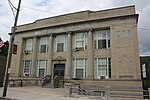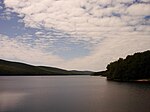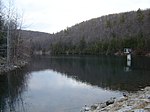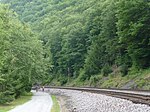Nesquehoning, Pennsylvania
1827 establishments in PennsylvaniaBoroughs in Carbon County, PennsylvaniaPopulated places established in 1827

Nesquehoning is a borough in Carbon County, Pennsylvania, United States. It is part of Northeastern Pennsylvania. The population was 3,336 at the 2020 census.Nesquehoning was established as a result of the anthracite coal mining industry. It was incorporated as a borough in 1963 (effective in 1964), having previously been a part of Mauch Chunk Township west of the Lehigh River. The borough's name is of Native American origin, commonly believed to signify "narrow valley;" however native language scholars translate the name as "at the black lick" or "at the dirty lick," referring to mineral licks frequented by deer or other animals.
Excerpt from the Wikipedia article Nesquehoning, Pennsylvania (License: CC BY-SA 3.0, Authors, Images).Nesquehoning, Pennsylvania
Little Flower Avenue,
Geographical coordinates (GPS) Address Nearby Places Show on map
Geographical coordinates (GPS)
| Latitude | Longitude |
|---|---|
| N 40.868055555556 ° | E -75.824166666667 ° |
Address
Little Flower Avenue
Little Flower Avenue
18240
Pennsylvania, United States
Open on Google Maps








